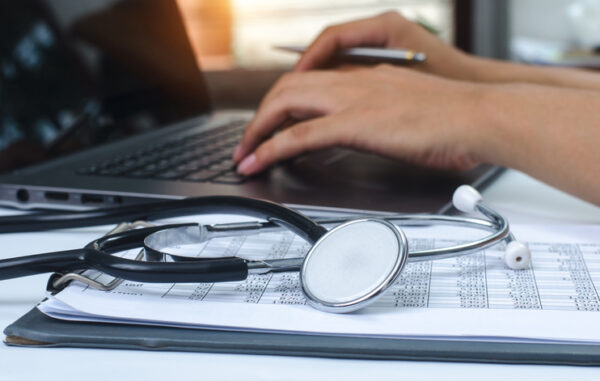
In the past few weeks, the impact and devastation that Covid-19 has brought on nursing homes and assisted living centers have become regrettably clear. In recent weeks, more than 40% of Covid-19 related deaths have occurred in nursing homes or long-term care facilities, outpacing all other settings. The disproportionate number of deaths for residents of nursing homes compared to those seniors living at home has been alarming. It will take months, perhaps even years, for nursing homes to regain some measure of normalcy and return to their previous levels of growth.
Enabling and Simplifying Home-Based Care Monitoring
This means that more and more families and caregivers will be faced with the challenge of ensuring that good care can be provided for seniors at home. That care must be effective, cost-efficient, and easy to manage. This need to provide for more care delivery at home has now gone from trend to necessity.

Transforming Clinical Content with Ambient & Generative AI
Sheila Bond, MD, talked about the latest trends regarding integration of AI in healthcare.
The parallel growth in wearable technologies designed to monitor bodily responses may enable this trend of stay-at-home care if deployed in a smart manner to make it effective and easy to use, regardless of age or technology skill level.
The wearables market overall has been growing at an annual rate of 16 percent, and the wearable medical device market is expected to grow at an average rate of 27 percent from 2019 to 2027. The high growth rate is encouraging many companies to jump into this space, and large established players are launching new services along with emerging startup companies. Many expect this growth to continue for the next eight to 10 years, and then we will see the market consolidate from hundreds of entities to fewer than five global players as is normally the case in almost all categories.
Addressing Senior Isolation and Mental Decline
There are a few specific and consistent pain points for seniors living alone that remote monitoring can support; these include depression, decreasing mental faculties, early-stage dementia, and/or Alzheimer’s disease. These challenges with mental diseases and cognitive degradation are compounded and sometimes caused by social isolation or perceived isolation. Some health care providers are starting to adopt the use of apps and text messaging for medication activity reminders. This is a step in the right direction, but there is so much more that can be done in this area. And there are so many patients who are left out when this level of engagement is only possible via a mobile phone or a smart device.
The latest innovations in wearable technologies and IoT provide us with the tools to begin addressing the specific challenges of the senior population. While sports fitness watches and mobile phone apps are fine for monitoring at the consumer level, seniors and caregivers need us to innovate and take it one step further by integrating the health care team to provide monitoring, counseling, and patient-specific feedback on how to keep people on track with their care plans. This can be done securely, using encryption technology to keep information secure, and easily with a wearable that does not rely on a mobile phone or a complex user interface.

How Zelis is Transforming Healthcare Payments with Enterprise AI
How Zelis hopes to solve the healthcare financial system for payers and providers.
Advancing Remote Monitoring Alongside Telehealth for Seniors
Today, many health care groups provide mobile phone or PC apps that allow consumers to engage with their health care team remotely. However, those apps and smartphone interactions are difficult for seniors to use.
Many seniors are only comfortable with old-style flip phones with large numbers to dial. One alternative is to consider a senior-friendly health care–specific wearable device to collect and transmit data and send reminders to patients. These wearable devices are available today to securely capture information and send alerts to the user and the care team if a serious complication is detected.
In order for remote monitoring to catch up to recent advancements and adoption of telehealth for seniors amid Covid-19, there are a few areas where change is needed: (1) the technology consistently needs to match user requirements for seamless, unobtrusive, and reliable bi-direction communication on relevant health markers, (2) the technology must also be customizable and offer user-friendly applications to ensure engagement, and (3) reimbursement protocol and infrastructure support must be fast-tracked to ensure that health care providers receive appropriate compensation for use of remote monitoring technologies.
The Covid-19 pandemic is providing the impetus to look at the senior home health care model differently and more holistically. It’s encouraging to reflect on the significant opportunities that exist to address some of these home-based care challenges for seniors and the critical role remote health monitoring can and should play alongside telehealth-based models of care that allow seniors to age with grace in their own homes.
Arnol Rios is the Head of Network Communications Sales and Business Development in North America for Takeoff Point – a Sony company.
This post appears through the MedCity Influencers program. Anyone can publish their perspective on business and innovation in healthcare on MedCity News through MedCity Influencers. Click here to find out how.






